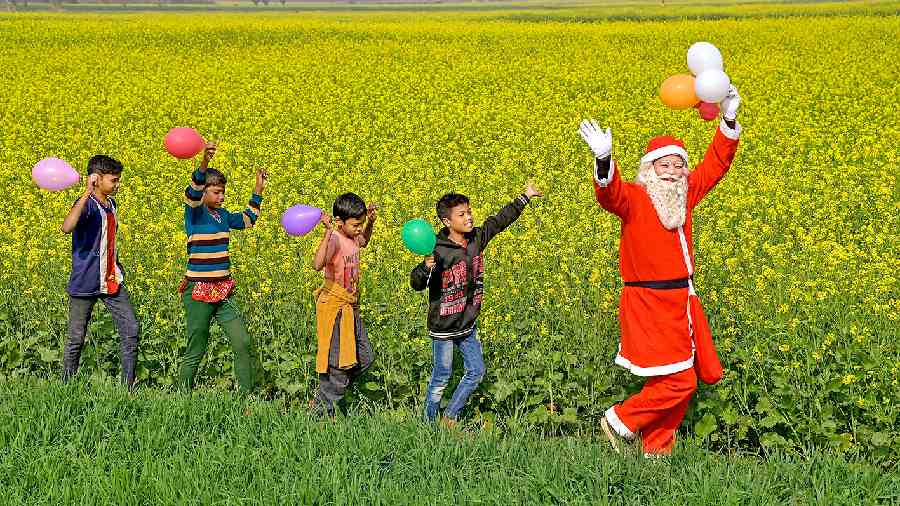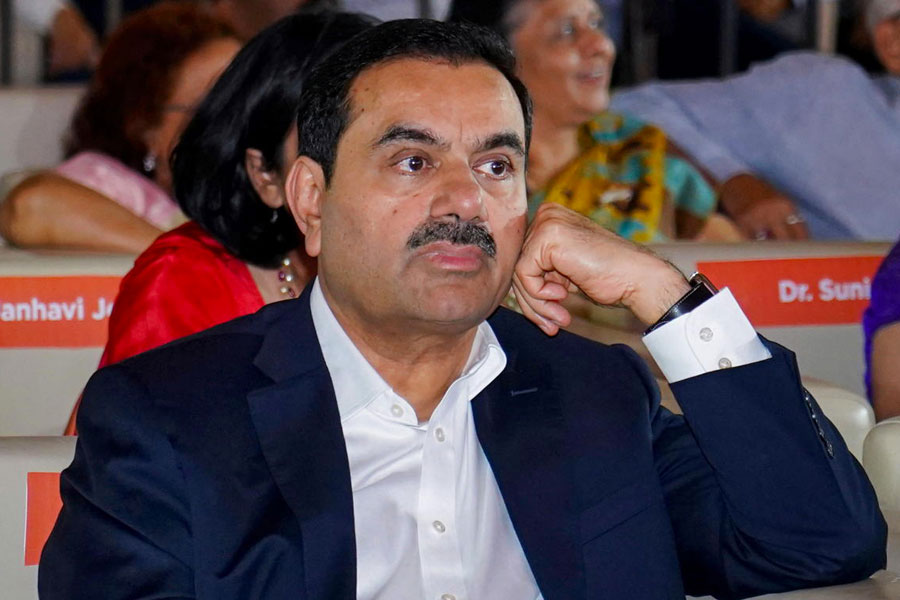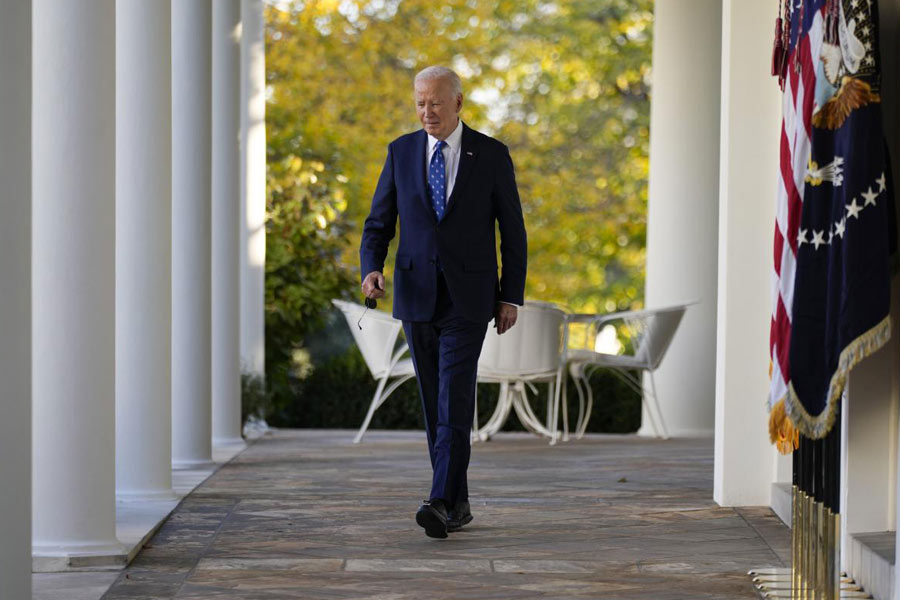For the last five years, I’ve lived in a rented house directly opposite a church. It’s a modern double-storeyed residential building repurposed as a Pentecostal place of worship. The only outward sign of its function is a large neon cross that glows mutedly after dark. But every year, about a month before Christmas, this plain, boxy house is transformed by a Nativity scene, lovingly assembled on the balcony of the first floor that runs across the face of the house.
It’s not as if the church dusts off stored images of Joseph and Mary and baby Jesus to create an annual tableau. No, the Nativity is re-imagined every year. One year, it was a detailed diorama as deep as the width of the balcony would allow, with lifesize figures for the three central characters and slightly scaled down (but still three dimensional) representations of the shepherds, their sheep, and the Magi. Some years an ox made an appearance, in others it was replaced by a donkey.
This year, the designers of the scene have rendered it in bas relief, with all its characters arranged in a row of adjacent images. This has the effect of compressing the crib while giving the minor characters more space than usual. There’s a magnificent ram’s head in profile complete with horn while the Magi are much reduced.
As a non-believer who isn’t Christian, I feel reassured by this elaborate set that’s assembled and dismantled each year. I like both the sameness and the differences. Christmas in Delhi is a small affair compared to Diwali or compared to Christmas in more Christian countries elsewhere, but it still punches above its weight. The India International Centre has erected a faux frosted tree on a hillock of cotton-snow. A small Santa sleds down this fluffy slope, bearing gifts, ringed by poinsettias. It should seem absurd but it doesn’t.
One reason it doesn’t for someone of my generation is that we grew up in newly post-colonial cities where the rituals of the raj still had some life in them. Also, a large part of my middle-class cohort went to Christian, specifically Catholic, schools and so, in a dim way, we knew the story. I drew the line at carol-singing not on account of some principle but because I couldn’t sing and it seemed an uncomfortable thing to do on cold winter nights in Delhi. By being a celebration centred on a baby in a crib, Christmas cornered the market on kindliness. The bonus of the bearded man and his presents makes it hard to beat.
In two years in Brooklyn, I learnt to say Happy Holidays in place of Merry Christmas. I realised that Christmas celebrations coincided with the Jewish celebration of Hanukkah. In an overwhelmingly Christian country like the US, it gave Jewish families with children an opportunity for gift-giving and celebration within their faith at the same time as Christmas. There was an African-American festival called Kwanzaa invented in the Sixties, specifically to give black American families a way of resisting assimilation into white Christian festivity. It isn’t hard to sympathise with the challenge of protecting minority identity while remaining part of the world around you, but Christmas’s competitors in New York ran the risk of seeming to be echoes of the main event.
My most vivid Christmas memory is attending midnight mass in a church on 6th Avenue in Brooklyn. It was a properly white Christmas with snow frosting the Nativity tableau outside the church door. The children, still in primary school, were content to sit quietly in the pews in the relative warmth of the nave. My nephew, all of a year old, slept like the babe he was in his mother’s lap. The lovely thing about that night was the sense that we were welcome there.
It’s the same sense of welcome that I feel when I walk into a Durga Puja pandal. Not being Bengali, it’s a world that I find strange but hugely enjoyable. I remember peering at a Durga figure that was, thrillingly for me, a dead ringer for Hema Malini. It seemed as transgressive as giving Hanuman Dharmendra’s face. Wandering around, lifting up one tired child or another, working our way through improbably stuffed porotas, all of this together made Puja pandals a part of our family calendar. In the same way as Eid was the time we drove off with the children to Jamia Millia Islamia, where I taught through my working life, to eat kebabs and kheer and collect their eidi, yet another payoff for the great good luck of being little.
None of these interactions with traditions different from mine was particularly deep or profound. In fact, what marked them was my awareness that I was a visitor or even a tourist. And yet, that is the way in which we know nearly all of the world except for the handful of people we love without reservation: from the outside, looking in.
There should be a name for this but there isn’t so I’m going propose one. Watching the Nativity tableau go up (and then come down), being warm in a church on Christmas Eve, loafing around a Puja pandal, motoring off to stuff yourself on Eid... these are forms of spectatorial pluralism. They are the ways in which we sample the bits of the world that we aren’t a part of already.
Like tourism, these are often transient and shallow interactions with unfamiliar traditions and communities but, like tourism, they offer simple, uncerebral comfort and pleasure. This is sometimes hard to do in a world where history and violence conspire to make neighbourliness difficult. The policing of garba venues to keep Muslims out is an example of this. Equally, in a country as various as India, it’s hard for a week to go by without the opportunity of being part of someone else’s world presenting itself. We owe it to ourselves to talk up the idea of the citizen as tourist. As Marx might have said (but didn’t): revolutionaries have tried to change the world in various ways. The point, however, is to sample it. Merry Christmas!
mukulkesavan@hotmail.com










